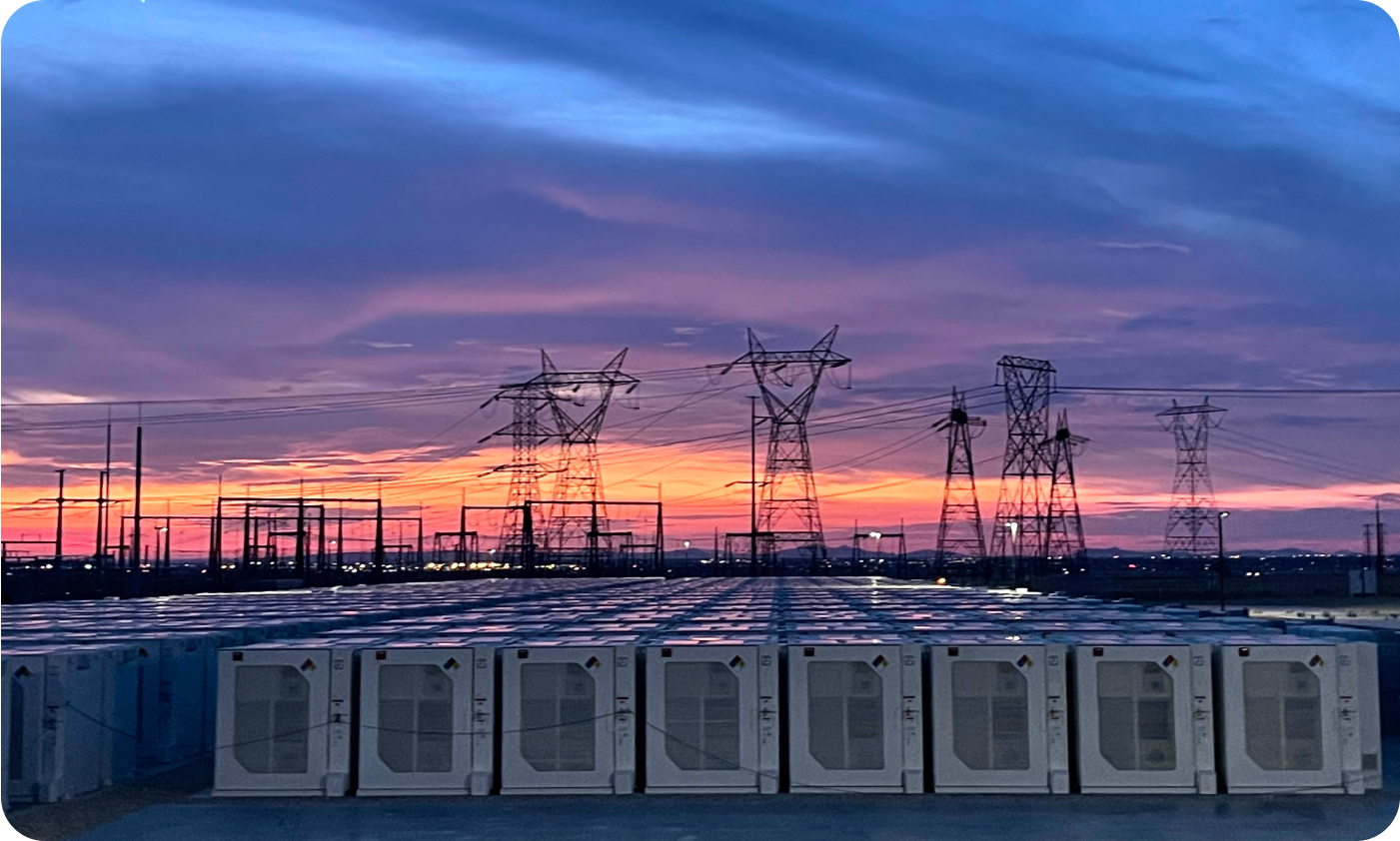
Energy storage is a critical part of U.S. infrastructure—
keeping the grid reliable, lowering energy costs, minimizing power outages, increasing U.S. energy production, and strengthening national security.

The U.S. storage sector is experiencing remarkable growth. That's because energy storage balances and maximizes the benefits of low-cost solar while supporting traditional power plants like gas and coal, helping them run longer and more efficiently.
With energy storage, America’s immense homegrown energy resources are maximized to make a power grid that’s reliable, affordable, and built for the future. That’s why leaders from across the energy industry launched the U.S. Energy Storage Coalition to make storage a core part of America’s energy strategy.
Energy storage is truly unique in its ability to add flexibility and efficiency to our nation's power grid.
Battery energy storage system's unique capabilities serve communities in safe, clean, efficient, and affordable ways.
Storage provides reliability during historic adverse weather events, serving as back-up power for individual homes, businesses, communities, and the broader grid system to minimize and prevent costly and dangerous power outages.
It also supports an industrial comeback. More than $100billion is already committed to U.S. battery and energy storage equipment manufacturing, creating 350,000 jobs.
The industry coordinates with governments and regulators to ensure projects are built to account for the specific needs of every community.
Featured Video & Resource
Energy Storage Complements Baseload Power
Energy storage is designed to maximize the power we can get from our grid. Energy storage technologies charge when there is low cost, excess energy that would otherwise be wasted, then provide that stored energy back to the grid when it’s needed most, making storage a gamechanger for affordability and reliability across the grid. By responding instantly to fluctuations in electricity supply and demand, energy storage balances power generation from all resources and frees up power plants, like natural gas, to serve as baseload resources.
PJM needs to deploy 16 GW of energy storage to maintain grid reliability through 2032. Learn more in our recent report with the Brattle Group.


By storing energy when the price of electricity is low and discharging that energy later during periods of high demand, energy storage can reduce costs for utilities and save families and businesses money.
Also, by enhancing grid reliability and providing back-up power, energy storage can prevent costly damages to families and businesses associated with power outages.
Wind and solar are the cheapest sources of electricity—electricity that is produced in America. Energy storage supports using more clean energy by storing it when supply is high but demand is low, which enables the grid to incorporate more of the most cost-effective sources of electricity generation.
Grid-scale battery energy storage is safe and highly regulated, growing safer as technology advances and as regulations adopt the most up-to-date safety standards.
Fire incidents at energy storage facilities are extremely rare occurrences and remain isolated, but the industry has taken a proactive approach to working with policymakers and fire officials to promote safety. And as more facilities are built, the percentage of battery fires continues to decrease.
The rapidly-growing industry supports 72,000 good-paying jobs through development, construction, and maintenance of storage facilities.
A recent U.S. manufacturing renaissance added to the 10,000 new jobs at factories producing storage technology across the country.
Energy storage technologies have the unique capabilities to keep the lights on when the power grid is under stress. In both Texas and California, energy storage technologies have prevented black outs during significant heatwaves—keeping people safe, power affordable, and the power on for businesses.
By storing energy when there is excess supply of clean energy compared to demand, energy storage can reduce the need to stop (curtail) generation facilities and instead store and use the excess energy later when it is needed.
Storage is also instantly dispatchable, so it helps the grid adjust to fluctuations in demand and supply, which increases grid flexibility, alleviates transmission congestion, and optimizes grid efficiency—reducing overall system costs.
Energy storage reduces the country's need to depend on costly imported energy.
Energy storage helps us maximize the use of affordable electricity produced in the United States.

Energy storage is a leading technology for boosting grid reliability and lowering energy costs for families and businesses.
Energy Storage Project to Reduce Costs 15-20%

How New Battery Capacity Helped California Avoid Another Blackout

Our partnerships
Local fire departments and first responders work with storage developers on safety training, sharing information about how the technologies work, and developing joint response plans and safety strategies.
State and local governments can support and promote safety by adopting NFPA 855, the gold standard for energy storage safety developed by fire service professionals and fire protection experts. Uniform adoption of NFPA 855 ensures best practices are utilized across the United States.

Resources
Discover more about the facts and benefits of the growing energy storage industry.

.svg)